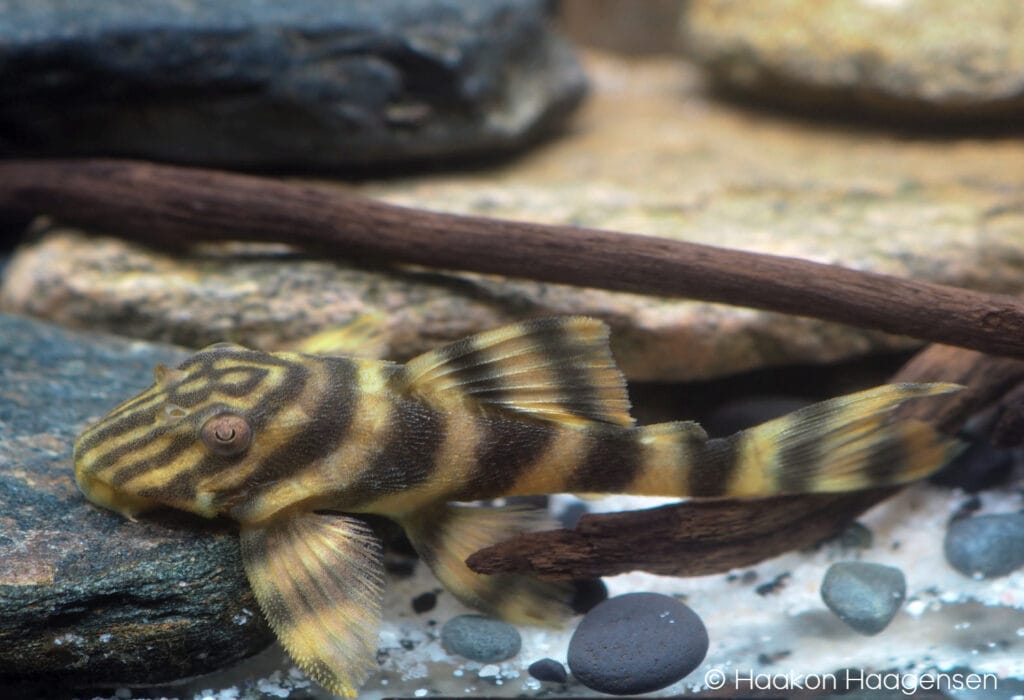
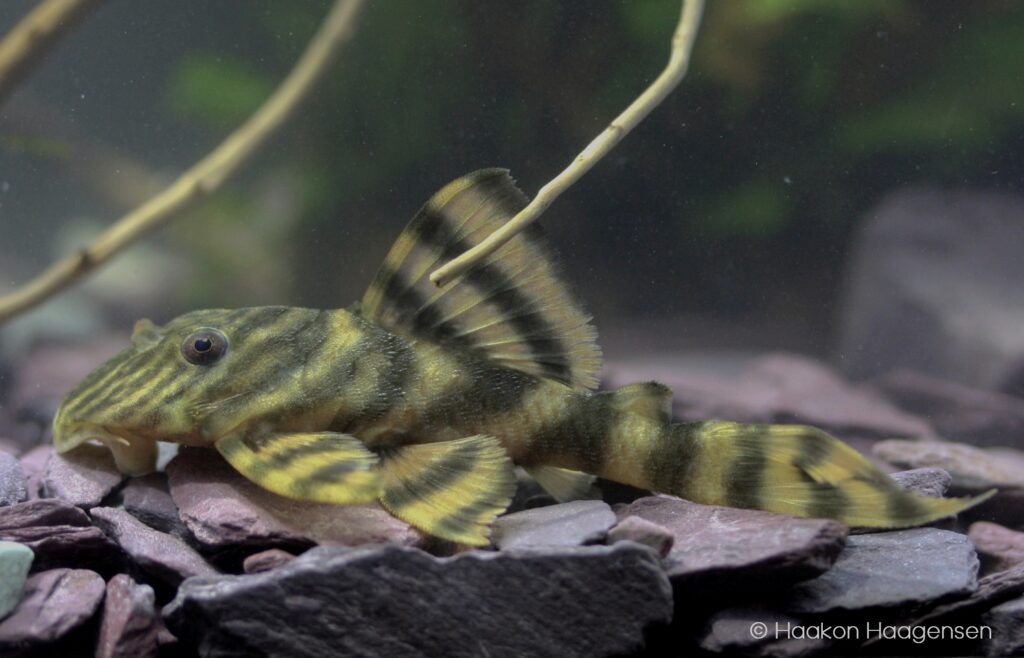
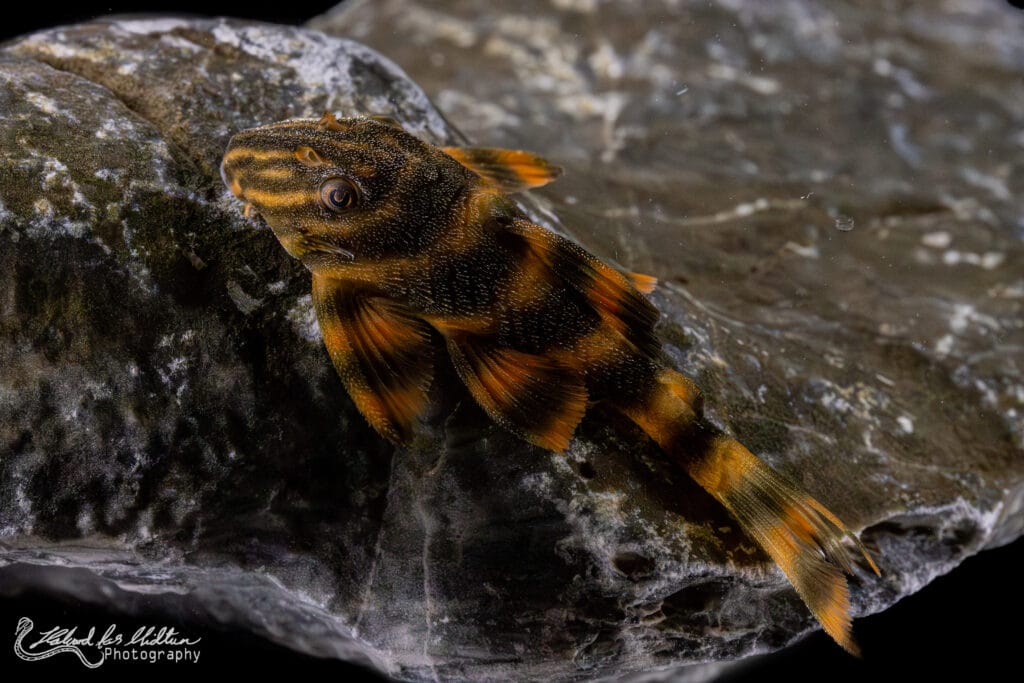
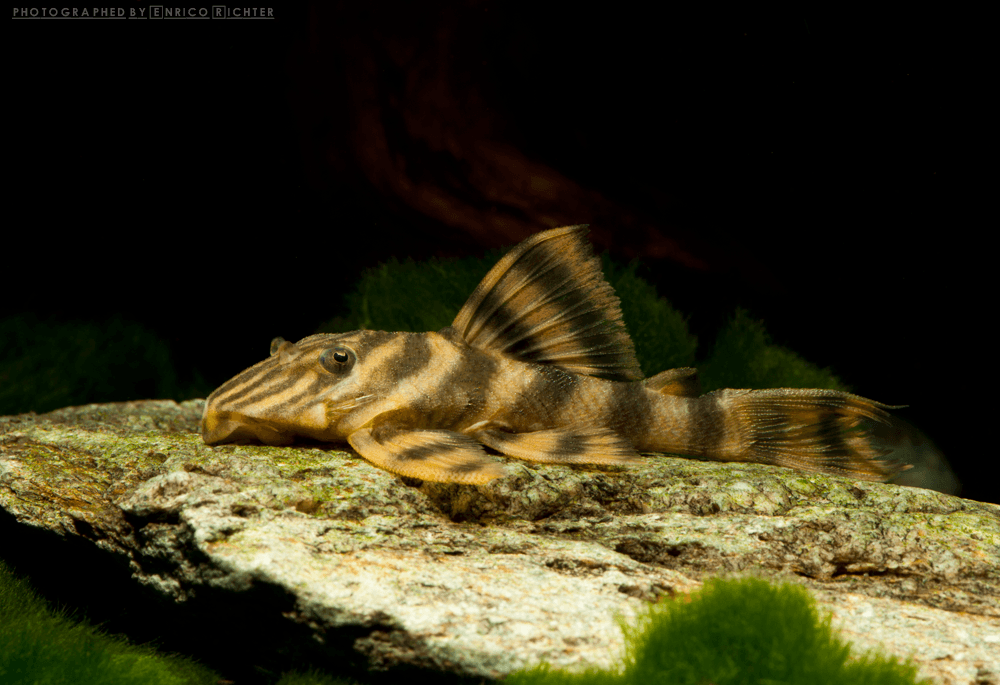
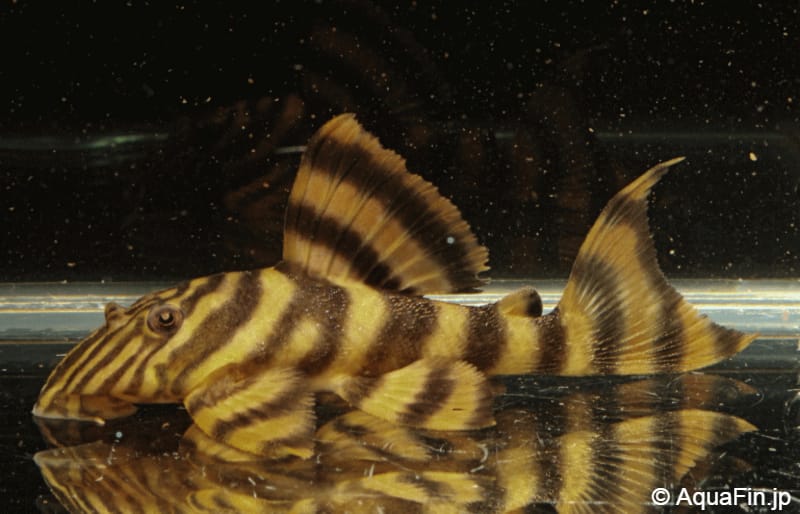
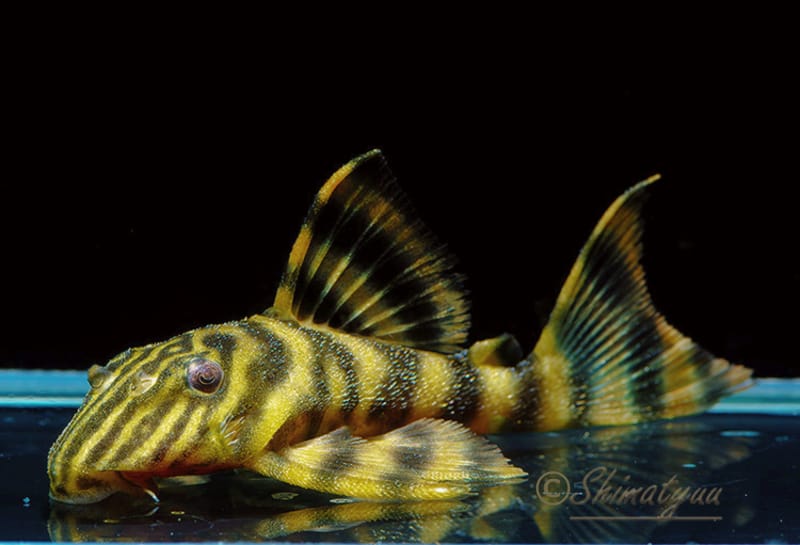
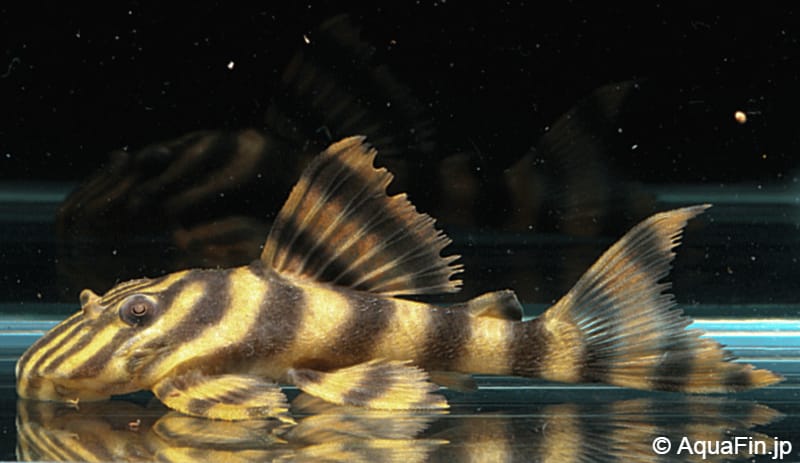
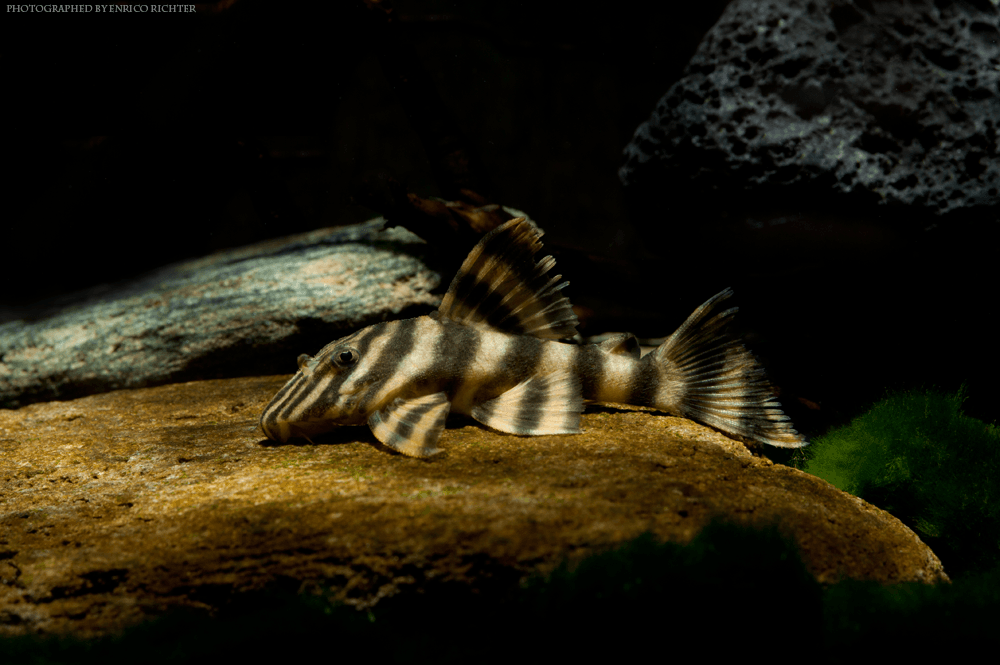
From Rio Demini, a clearwater affluent to the Rio Negro in Brazil, comes L169. By now this is one of the most established forms of Panaqolus in the hobby, and also one of the most affordable. This is a great Pleco in many ways, as it’s quite hardy and easy to care for when basic demands are met.
Facts:
Name: Panaqolus sp. L169
Trade names: L169, LDA1, Demini Tiger Pleco, Gold Stripe Tiger Pleco
Origin: Rio Demini, Brazil
Maximum size: 12 cm / 5”
Panaqolus species are great aquarium fish. They need shelter in the form of wood and rocks, and if they feel safe, they will venture out in search of food even during daytime. They prefer a vegetarian diet, and of course wood is essential for their digestion. Some crustaceans and insect larvae can be added to their diet, but a diet consisting of too much protein and too little vegetarian food can cause trouble. They are peaceful Plecos, but males can be quarrelsome over territories and food. Panaqolus species are slightly more challenging to breed than many other popular Plecos, but it’s usually all a matter of time and patience. When they do, they breed in typical Loricariidae manner with the male guarding the brood in his cave. Usually, male Panaqolus develop quite impressive odontodal growth on their flanks and on their fins.
There are lots of similar looking Panaqolus species being exported from both Peru and Brazil. L169 can quite easily be confused with P.claustellifer (L306) from Rio Takutu. L306 seems to have a more reddish colour than L169, which is usually beiger.
More info:
